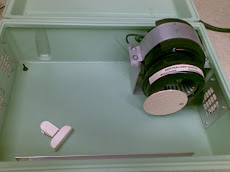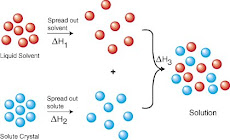Es sabido que el Polietileno de Alta Densidad, (PEAD, HDPE en ingles) es uno de los plasticos mas economicos y mas utilizados, especialmente en la elaboracion de bolsas plasticas y envases plasticos, como en botellas para el envasado de productos de limpieza y quimicos en general.
Sin embargo una desventaja del uso del polietileno es la permeacion a vapores o gases, y su falta de claridad debido a su cristalinidad. Estas ultimas caracteristicas llevan al consumidor a utilizar envases de otros polimeros, como el PVC, Policarbonato o PET, que son transparentes y aguantan mas presion interna, pero a mucho mayor precio.
Ahora sin embargo se ha logrado una nueva linea de envases de Polietileno que combinando su mayor pureza, su reduccion del estado cristallino, estilizando su forma estructural y optimizando el peso de la botella, se ha logrado un envase que permite llenar productos quimicos con muy alta presion de vapor como el hidroxido de amonio, conocido como amoniaco. Para mas detalles ir a http://www.pvcc.com/ o puede leer la revista Packaging World de Junio 2008 en http://www.packworld.com/ .En el caso del Polipropileno, se ha logrado esta mejora en las caracteristicas de transparencia, reduciendo la cristalinidad mediante el uso de agentes nucleantes como acido benzoico y benzoato de sodio.
NUEVOS CAMBIOS
Estos polimeros termoplasticos en general son destinados en su mayoria a la fabricacion de empaques; solo en Europa se gastaron en el 2007 una cantidad igual a 54 Billones de Euros correspondientes a 18.2 millones de toneladas de estos materiales. Esto debido a la gran flexibilidad de caracteristicas de estos materiales, su versatilidad, su resistencia, su bajo costo, su facil procesamiento y transformacion, etc, que han hecho que desde su descubrimiento, los plasticos hayan crecido enormemente en su utilizacion y han suplantado el uso de muchos otros materiales.......Pero sin embargo hay siempre una desventaja; los plasticos son demasiado duraderos y poco degradables, o sea que si dejamos en la tierra una botella de polipropileno, tarda demasiado tiempo en degradarse y descomponerse a sus elementos elementares por efecto del oxigeno, microorganismos y el tiempo. Esto ha hecho que las grandes empresas y gobiernos de muchos paises, ( y especialmente por el motivo de la biodegradabilidad, el calentamiento global, las fuentes alternas de energia, etc) esten considerando nuevamente el uso de materiales clasicos como el vidrio, papel, biomateriales, fibras naturales, carton o metales, que son mucho mas reciclables (100%) y con mejor biodegradabilidad.














































